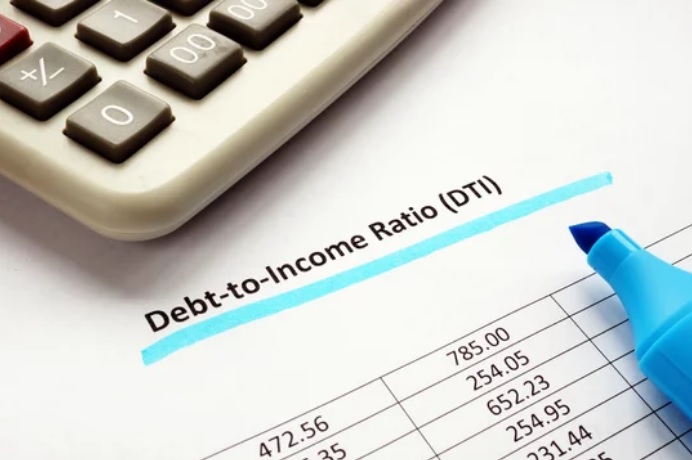The debt-to-income ratio (DTI) is the percentage of your monthly income that goes to paying different monthly debts. Mortgage lenders use this ratio to determine the borrowing risk. If your DTI goes above a specific number, your Mortgage loan application will be rejected by mortgage lenders.
You must be thinking of a maximum debt-to-income ratio to get the loan, don’t you? Some mortgage lenders issue loans up to 43% of the DTI ratio. However, it is not an ideal figure because some mortgage lenders can reject your application in this case. The ideal DTI ratio is 36% or less.
Keep reading the article, and we will tell you what the debt-to-income ratio is and how you can calculate it yourself. Later on, we will also discuss the ideal and maximum DTI ratio in detail.
Contents
What is the importance of this comparison?

The debt-to-income ratio is the quantity that calculates the percentage of debts over your gross income. It includes all your car loans, housing expenses, payday loans, mortgage rent, and investment loans, etc.
There are two types of debt-to-income ratio. The first is Frontend DTI that calculates the income that goes towards rent, mortgage insurance, property taxes, and insurance. The second is Back-end DTI, which calculates income that goes into recurring debts such as car loans, bank loans, etc.
It is basically a metric used by creditors and mortgage lenders to determine borrowers’ ability to pay their debt. They analyze the person’s ability to repay debts via DTI after accumulating their debt too. Therefore, keeping your DTI at an optimal level is an indication of your financial health.
How to calculate your debt-to-income ratio?
Let us see the systematic guide to calculate your DTI:
- Add up all your monthly bills and loans discussed above. However, you should not include expenses of grocery, Taxes, gas, and utility bills.
- Sum your income from all the sources.
- Divide the sum of monthly bills calculated in the first step by your gross income, and multiply it by 100.
- You will get the answer in percentages in the above step. That is your DTI.
The lower the percentage, the lower is risk ratio and higher the chances to qualify for the mortgage loan. Let me explain this with an example. If your DTI is 15% while your colleague DTI is 25%. Undoubtedly, your colleague will face more difficulty in managing other loans than yourself.
➡LEARN MORE: Can you Find Out How Much Someone Owes on their Mortgage?
What is the ideal and maximum ratio limit?
Whenever you apply for a mortgage, the lender will see your debt-to-income ratio and credit history to determine the borrowing risk. If you have a lower DTI, there is a high probability that you will get a mortgage loan.
The ideal situation is that your DTI should be less than 36%. In the meanwhile, your debt going towards mortgage should also be less than 28%.
If your DTI goes up to 43%, there are still chances that you will get a loan. It is the maximum limit, and every mortgage lender will turn down your loan application if your DTI goes beyond this. Some mortgage lenders can also deny your request if your DTI falls between 36% and 43%.
Conclusion
The debt-to-income ratio plays a pivotal role in qualifying for the mortgage loan. Therefore, you should keep it as minimum as possible. You can go above and check what DTI and how you can calculate it. Besides, you can also see the ideal DTI ratio to qualify for a mortgage loan.
Writer and content creator interested in Entrepreneurship, Marketing, Jobs and landlord issues. I have a bachelor’s degree in Communication from the Andrés Bello Catholic University, VE, and I also studied at Chatham University, USA. In this blog I write and collect information of interest around agreements, property and mortgage.